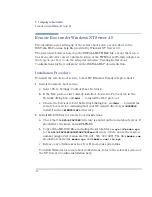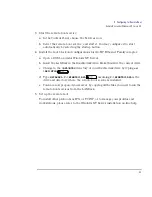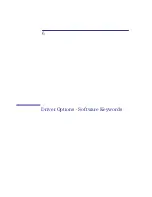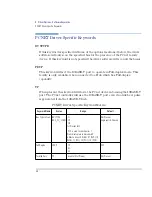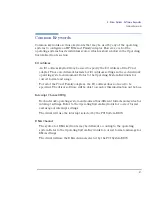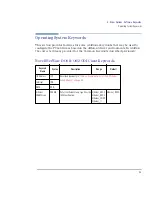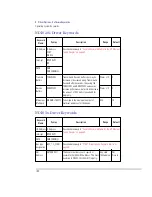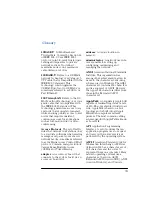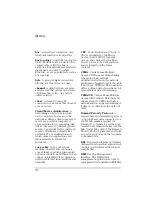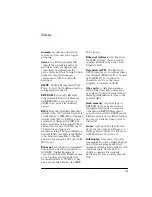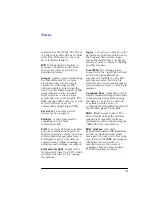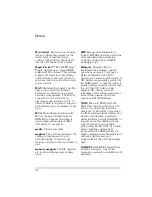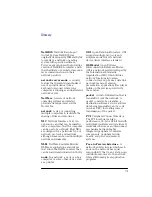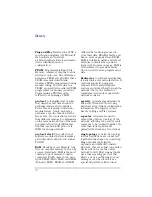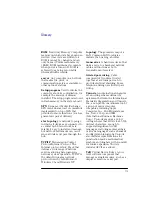
Glossary
English
106
domain
A collection of network
servers and resources in a logical
grouping.
driver
A software program that
controls the underlying network
hardware (such as adapters and
controllers) or implements the
protocol stacks_Stack through which
higher-level applications can
communicate with the network
hardware.
DMTF
Desktop Management Task
Force. A body which defines desktop
management standards.
EEPROM
Electrically Erasable
Programmable Read Only Memory.
An EEPROM is a special type of
PROM that can be electronically
erased.
EISA
Extended Industry Standard
Architecture. A PC system bus that is
an alternative to IBM's Micro Channel
Architecture (MCA). EISA is a bus
architecture designed for IBM PCs
and compatibles using an Intel 386 or
486 microprocessor. An EISA bus is
32 bits wide and supports
multiprocessing. The main difference
between EISA and MCA is that EISA
is backwards compatible to the ISA
bus (also known as the AT bus), while
MCA is not.
Ethernet
A LAN protocol originally
developed by Xerox in cooperation
with DEC (Digital Equipment
Corporation) and Intel. Ethernet uses
a bus topology and supports data
transmission rates of 10 Mbs. It has
also been standardized by the IEEE
802.3 group.
Ethernet Address
Also known as
the IEEE address, this is a unique
numeric identifier of a node on an
Ethernet LAN.
Extended ASCII
The Extended
ASCII character set encoding scheme
was defined by IBM in 1981 to be used
by the IBM PC. It contains 256
characters and is, as the name
suggests, a superset of ASCII.
fiber optic
A data transmission
method that uses light pulses sent
over glass or plastic threads (fibers).
Message transmission is close to the
speed of light.
flash memory
A special type of
EEPROM that can be erased and
reprogrammed inside a computer.
Conventional EEPROMs require a
special device called a PROM reader.
Flash memory is non-volatile and does
not lose its contents when power is
turned off.
frame
A group of bits that include
data plus one or more addresses. A
frame generally refers to a link layer
(OSI Model layer 2) protocol.
full-duplex
A method of two-way
communication over a single physical
link. Offers advantages over half-
duplex by allowing both parties to talk
simultaneously. Can be used to
double communication speeds
between a PC and a special network
Hub.
Содержание Vectra VL6 7
Страница 1: ...Network Administrator Guide Online Guide Rev 5 0 Date 8 97 ...
Страница 9: ...1 Setting Up the Network Connection ...
Страница 19: ...2 Installing Novell NetWare Drivers ...
Страница 42: ...2 Installing Novell NetWare Drivers NET CFG Options for Novell NetWare 42 English ...
Страница 43: ...3 Installing Microsoft Network Drivers ...
Страница 56: ...3 Installing Microsoft Network Drivers NDIS 2 01 and 3 1 for Windows 95 56 English ...
Страница 57: ...4 Installing Other Network Drivers ...
Страница 76: ...4 Installing Other Network Drivers NDIS 2 01 Driver with Other Networking Products 76 English ...
Страница 77: ...5 Configuring for Remote Boot ...
Страница 95: ...6 Driver Options Software Keywords ...
Страница 102: ...6 Driver Options Software Keywords Operating System Keywords 102 English ...

